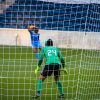
How to pick a goalkeeping baselayer
Normally, footballers only wear baselayers during the cold weather. Not so for goalies, who need the added protection during the game. Like most sporting equipment, though, not all baselayers are created equal. Here, we’ll give you some basic info on how to pick a goalkeeping baselayer.
Are Goalkeeping Baselayers Different from Normal Ones?
Technically, outfield player baselayers and goalie baselayers are the same. They’re made of the same materials and are used to protect the players as they run or dive around the field. Goalkeeper baselayers have extra padding specifically designed to protect the exposed areas of a goalkeeper’s body. This paddingis usually located on the hips, ribs and shoulders.
What Differences Could Baselayers Have?
A lot of baselayer manufacturers have different styles and designs to try and set their goalkeeper baselayer gearapart from the rest. Sometimes those changes make a difference in protection, other times they’re just for aesthetic purposes. Listing all of the ways that a base layer can be better than another isn’t practical. Instead, we’ll explain what to take note of the next time you’re thinking about making a purchase.
1. Material
Typically, players wear base layers when the weather becomes slightly chilly. Goalies, for the sake of protection, need to have that base layer, no matter what the weather. Having little choice as to wearing a baselayer or not means that the material the clothing is made of will matter a lot.
Cold and warm weather baselayers can be made of different materials. Some products claim to be able to handle both hot and cold temperatures, but it’s usually better to have one of each. Having the middle ground when it comes to comfort when playing isn’t usually ideal.
2. Padding Coverage
Although all types of goalie baselayers have padding for protection, some offer more coverage than others. Usually, these are due to design choices, but some are made for the sake of mobility or comfort. More padding does offer more protection, but they can constrict the movement of the goalkeeper. If they seem to be uncomfortable with too much padding, then it may be time to find a base layer that isn’t constricting but still has adequate protection.
3. Wicking
Wicking is the ability of the base layer to draw that moisture away from the body then leave it on the surface of the clothing. This wicking property makes it easier for the sun or air to evaporate that moisture. Sweaty clothes are always uncomfortable whether it’s hot or cold, and any goalkeeper will appreciate baselayers that reduce this problem.
Picking the Best Protection
Goalkeepers need all the protection they can get when playing the game. Baselayers provide it for them, but not all baselayers are created the same. Although knowing which type to pick can be a matter of taste, taking note of how much protection it can offer is always a good idea. If you want the best goalkeeping baselayer for you or your child, keep these crucial things in mind and visit Just Keepers for all your goalie needs.

















